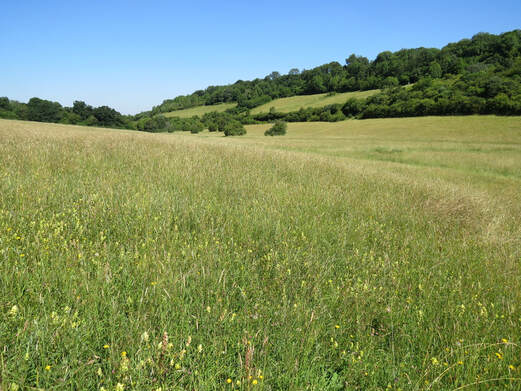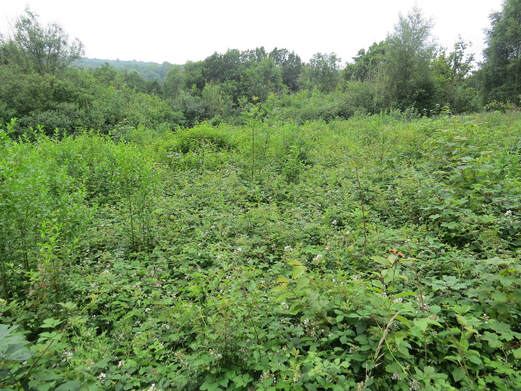|
Chalk downland is an internationally rare habitat and in Surrey there are several notable sites on the North Downs. Old chalk grassland is one of the richest habitats in Western Europe in terms of botanical diversity and contains as many as 45 species per square metre. Up until the Second World War, traditional grazing practices ensured that this habitat was maintained in a wildlife friendly manner but since then large areas have been lost as a result of the intensification of agriculture and development.
The cessation of traditional grazing over much of the North Downs has proved to be the greatest threat because, once grazing ceases, coarse scrub quickly becomes dominant. When this happens, the wild flowers and invertebrates that characterise good quality chalk grassland are rapidly lost. In many places, rabbits provided a substitute for livestock grazing, but in recent times numbers have been significantly reduced by disease. Preserving as much as possible of our Surrey downland is important and a number of conservation organisations such as the Downlands Partnership are actively involved in the management of chalk grassland. |
|
Manually clearing scrub with the help of volunteers is often a first step in habitat restoration and once this is achieved then conservation grazing can commence. Depending upon local circumstances, this may involve the use of sheep, cattle and occasionally goats. Results have been impressive and large areas of chalk grassland are now being successfully conserved in this way.
|
Maintaining chalk grassland in good condition is a major task and one that the Trust supports by providing funding for this work. The effort is usually rewarded after just a few years when wild flowers typical of chalk grassland start to appear, including Marjoram, Thyme, Cowslips, Bird's-foot Trefoil, Horseshoe Vetch and many others.
Chalk grassland is also noted for the variety of wild orchids that it supports, some nationally rare. These include Common Spotted, Fragrant, Musk, Pyramidal, Bee and Man orchids. The slide show (right) presents a selection of the wild flowers typical of chalk downland. |
|


